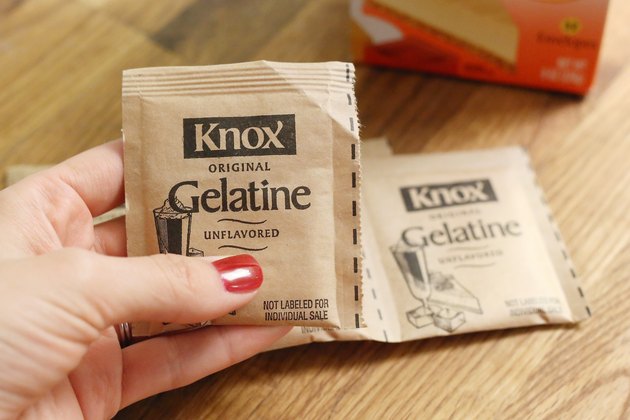

NOTE: You’ll find many brands of gelatin powder and sheets. Each package has a different bloom rating. An assortment pack of PerfectaGel Sheet Gelatin. You can buy the sheets in an assortment pack or individually. The company PerfectaGel produces sheets in five bloom rates: Titanium (120), Bronze (140), Silver (170), Gold (200), Platinum (230). They will likely have access to it.Īlternately, sheet gelatin in different bloom values is available to the retail consumer. To purchase powdered gelatin with a greater or lesser bloom rate, check with restaurant suppliers. Or, for a softer set, increase the amount of liquid. To keep your jelly set at room temperature, increase the ratio of gelatin to liquid. This will keep your jelly solid when cold, but will liquify at room temperature. Follow the directions on the box for the correct ratio of liquid to powdered gelatin. Knox brand manufactures a powdered form that measures 225 bloom. Jello requires a 230 bloom rating for it to set firmly. 100 sets the softest, useful for thickening custards, or to stabilize whipped cream. At a retail level, you’ll find sheets between 100-230 bloom rating. Bloom rating ranges from 30 to 300, but not all the strengths are available to the home baker. WHAT THE BLOOM IS BLOOM RATING?Ī bloom rating is a measurement that specifies the setting strength of the gelatin. Drop softened sheet gelatin directly into Lemon Custard, used in many Finer Cookie recipes.

I find sheet gelatin less concentrated and easier to handle. It is visibly clearer and hasn’t any odour or bitter aftertaste. It softens evenly, and melts quickly without lumps or impurities.
Knox gelatin jelly recipes professional#
Professional bakers prefer sheet gelatin for its clean flavour and consistent results. The leaves are sold in sections about 2 inches by 6 inches and are easy to cut into smaller pieces with a pair of kitchen scissors. Sheet gelatin is pure collagen protein dried into brittle, transparent sheets. Cut the sheet gelatin into convenient sizes. DISCOVER THE FINE RESULTS OF LEAVES OR SHEETS Sheet gelatin, translucent and brittle. Add melted powdered gelatin to cooked meringue when making Chocolate Marshmallows.


The thicker the liquid becomes, the quicker it will set when added to your cold custard (for example). Careful to keep the heat gentle since you don’t want the water to evaporate. It will have a grey hue and will appear thick and concentrated. The indirect heat will melt and liquify the gelatin quickly. To melt it, first soften the granules in a ceramic or glass container, then place the cup into a shallow bath of simmering water. Or it will suggest you dissolve it first. Sometimes the instructions will say to melt the bloomed or softened gelatin directly in the custard. You must dissolve softened gelatin either in your recipe or before adding it to your recipe. Melt the powdered gelatin before adding to your recipe. Pouring or dumping the powder into the water will cause the granules to clump and prevent it from dissolving properly, which will reduce the gel strength overall. Softening powdered gelatin can be a little tricky because you must sprinkle the powder very slowly over cold water in order to expose each granule to the liquid. This process is called “softening” or “blooming”, and will take about 5 minutes. For it to effectively gel, each granule must absorb water. Dry powder rehydrates quickly in cold water. From soup to jelly, it thickens and stabilizes sweet and savoury liquids. Sold in grocery stores everywhere, unflavoured powdered gelatin is a pantry staple. SET YOUR MIND AT EASE – GELATIN COMES IN TWO FORMATS SIMPLE TO FIND GRANULATED POWDER Knox brand powdered gelatin is easy to find on the grocery shelf. I’ll discuss the pro’s and con’s of each format below. Alternate to powder, gelatin can be dried into brittle and translucent leafs or sheets. Today his powder is the standard format specified in recipes, and sits on almost every grocery shelf and in almost every kitchen pantry. He revolutionized the American housewives’ ability to jellify broth, syrup, mousse, chiffons, custards and creams. The availability of gelatin changed when in 1889, Charles Knox of Johnstown New York commercialized this valuable ingredient. Early gelatin was extracted only in the kitchens of wealthy households because the process was far too time consuming for the working class. Once clarified, it becomes a pure protein that acts as a reliable gelling agent or thickener that you can use to create texture in sweet and savoury foods. Prolonged simmering coaxes the collagen from the bones and cartilidge of beef or pork into the broth. THE BACK STORYĮver simmer bones and notice that the broth had a gelatinous consistency once cold? This texture is due to a natural process whereby gelatin is released with gentle cooking over long periods of time. Softened sheet or leaf gelatin, The Finer Cookie.


 0 kommentar(er)
0 kommentar(er)
